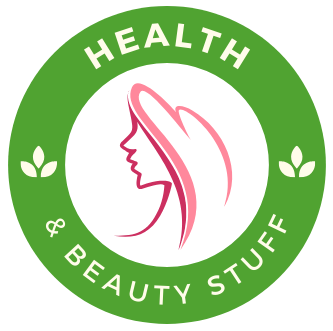TBHQ (tert-butylhydroquinone) is a food additive commonly used as a preservative to extend the shelf life of various processed foods.
It is a synthetic antioxidant known for its ability to prevent the oxidation of fats and oils, thereby preventing them from becoming rancid.
Although the United States Food and Drug Administration (FDA) has deemed TBHQ safe for consumption in small quantities, there has been ongoing debate regarding the potential health effects of long-term exposure to this additive. In order to make informed choices about our diets, it is essential to be aware of the foods that contain TBHQ.
In this article, we will provide you with a comprehensive list of foods that commonly contain TBHQ, enabling you to make more conscious decisions about your daily intake.
Snack Foods
- Potato chips
- Corn chips
- Pretzels
- Cheese puffs
- Cracker snacks
- Tortilla chips
Snack foods are notorious for their high TBHQ content. These addictive treats, often enjoyed during movie nights or as quick bites on-the-go, often contain TBHQ to maintain their freshness and prevent spoilage.
Processed Meats
- Hot dogs
- Deli meats
- Sausages
- Bacon
Processed meats undergo treatment with TBHQ to prevent the fats and oils within them from turning rancid. This not only extends their shelf life but also enhances their flavor and appeal to consumers.
Baked Goods
- Bread
- Cakes
- Pastries
- Donuts
- Muffins
TBHQ is commonly found in bakery products, where it is used as a preservative to prevent the decomposition of fats and oils. This allows these delicacies to stay fresh for a longer duration.
Breakfast Cereals
- Granola bars
- Cereal bars
- Oatmeal packets
- Flavored cereals
Breakfast cereals are often promoted as healthy options, but many of them contain TBHQ to keep them crunchy and flavorful. It is important to read the ingredient labels carefully when choosing breakfast cereals for a more nutritious start to your day.
Instant Noodles
Instant noodles are a fast and convenient meal option for many people. However, they often contain TBHQ to maintain their texture and flavor, despite sitting on store shelves for extended periods of time.
Cooking Oils
While TBHQ is primarily used as a preservative in food products, it can also be found in certain cooking oils. These oils may use TBHQ to prevent oxidation and maintain their quality over time.
Chewing Gum
- Bubble gum
- Chewing gum
Even chewing gum contains TBHQ! This additive is primarily used to prevent the gum’s oils from going rancid and losing their taste during long storage periods.
Frozen Foods
- Frozen pizzas
- Frozen chicken nuggets
- Frozen fish sticks
Frozen foods, particularly those that contain coated or breaded items, often incorporate TBHQ as a preservative to maintain the quality of the fats and oils used in their preparation.
Crackers
- Saltine crackers
- Graham crackers
- Cheese-flavored crackers
Various types of crackers, whether they are used as a snack or enjoyed with dips and spreads, may contain TBHQ to prolong their shelf life and preserve their taste and texture.
Margarine
Margarine, a commonly used butter substitute, often contains TBHQ to increase its stability and prevent spoilage. This additive allows margarine to be stored and used over an extended period without going bad.
While it is important to be aware of the presence of TBHQ in these food products, it is equally crucial to remember that the cumulative effect of consuming multiple items containing TBHQ can have an impact on our health. Moderation is key when it comes to the consumption of foods with added preservatives.
FAQ
Is TBHQ safe to consume?
The FDA has approved TBHQ as safe for consumption in small quantities. However, some studies suggest that long-term exposure to high levels of TBHQ may have adverse health effects. It is best to limit your intake of foods containing this additive.
Can TBHQ cause allergies or sensitivities?
While TBHQ is not directly associated with allergies, some individuals may be sensitive to this additive. If you experience any adverse reactions after consuming foods containing TBHQ, it is recommended to consult with a healthcare professional.
Can I find TBHQ in organic or natural foods?
TBHQ is more commonly found in processed and convenience foods. Organic and natural foods generally avoid the use of synthetic preservatives like TBHQ. However, it is always advised to read ingredient labels carefully to be certain.
What are the potential health risks associated with TBHQ?
Some studies have suggested that prolonged exposure to high levels of TBHQ may lead to various health issues, including liver problems, DNA damage, and potential allergic reactions. However, more research is needed to fully understand the impact of TBHQ on human health.
How can I reduce my intake of TBHQ?
To minimize your consumption of TBHQ, opt for fresh, unprocessed foods whenever possible. Cooking meals from scratch allows you to control the ingredients and reduce your exposure to food additives like TBHQ.
In conclusion, TBHQ is a commonly used preservative found in numerous processed food products. While the FDA deems it safe for consumption in small quantities, it is essential to be mindful of the foods we choose to incorporate into our diet.
By reading ingredient labels and opting for fresher, unprocessed alternatives, we can reduce our intake of TBHQ and make more informed choices about our overall well-being.

I am Kate, a dedicated health advocate. My purpose is to educate you regarding the most current wellness trends, offer science-backed insights to enhance your understanding, and present actionable tips to support you on your journey towards a healthier and happier life. Let us commence this wellness path together!
